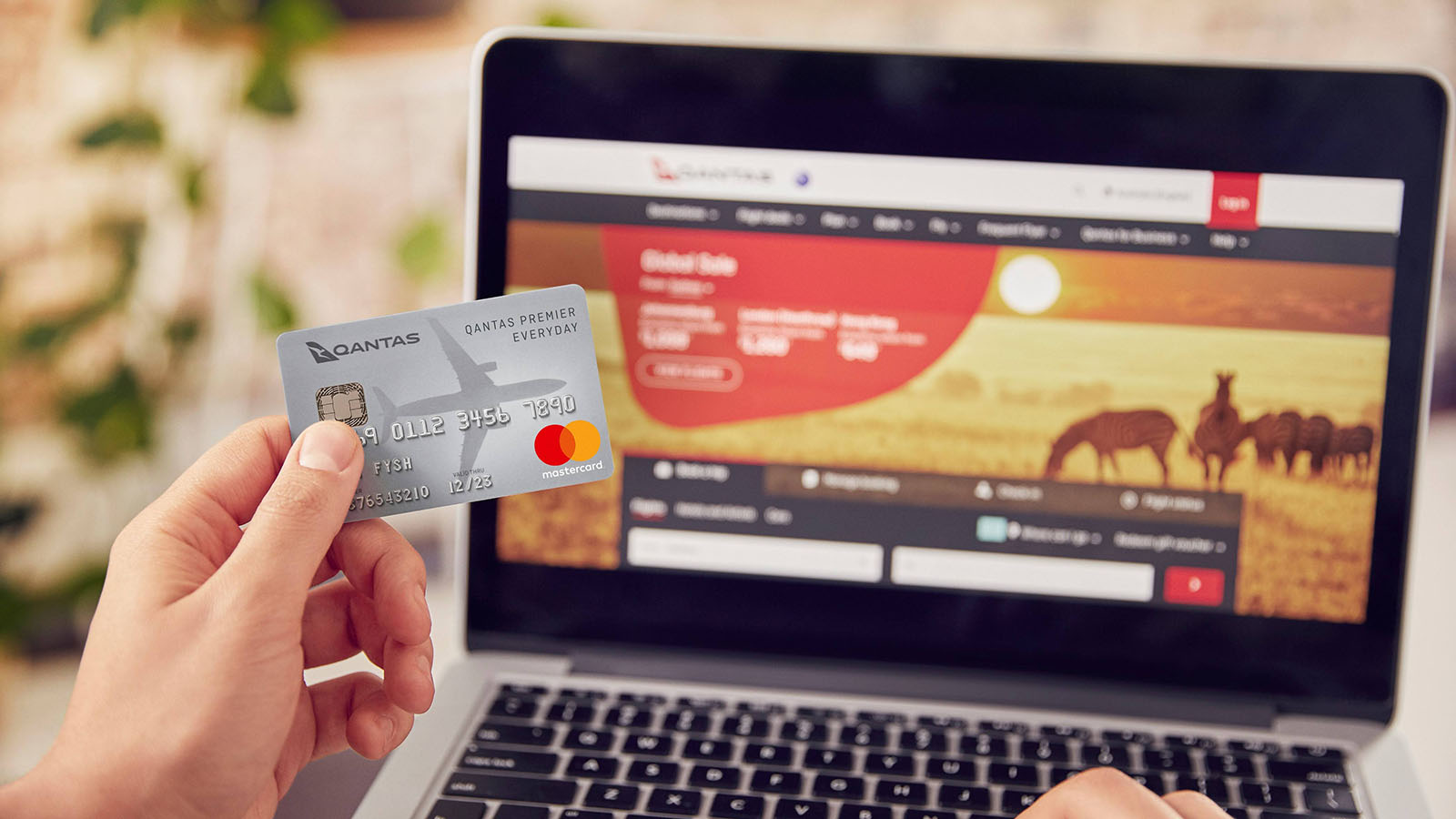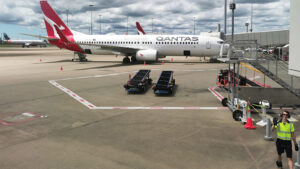Frequent flyer programs can be quite complex. It’s easy for beginners to make ‘mistakes’ – but even those with a keen interest in points can slip up. Make a bad enough mistake, and you could lose your entire balance of points. Or perhaps even your hard-fought Business Class reward booking.
Here are just some of the ways that frequent flyers can stay on top of the fine print, and ‘win’ the game of loyalty.
Not considering a points-earning credit card
There are so many ways to earn frequent flyer points. Many of those opportunities exist on the ground. For some, a points-earning credit card can provide greater rewards than flying itself.
Of course, it’s reasonable to note that credit cards may not be a good fit for everybody. Generally speaking, cards that earn points typically have interest rates at the higher end of the spectrum. Strategic shoppers may choose to take advantage of a card’s interest-free days and then pay the card balance in full to avoid interest charges completely. But those who’d routinely carry a balance from month to month would be hit with significant interest charges. These would likely negate any value gained from the points received.
But for those who decide that points-earning credit cards are right for them, the points can speak for themselves. By using a credit card to pay for everyday expenses, a cardholder could earn points on money they’re spending anyway. And by paying off a card’s balance in full each and every time, those hefty interest charges could be avoided.

In other words, earning points – but without the interest bill. Credit cards with points attached still usually attract other charges like annual fees. So naturally, it’d make sense to compare the value and volume of any points received against the costs paid to earn them.
The same could be said of paying a credit card surcharge to use a points-earning product. As to whether it’s worth using a particular card – or indeed, even having a credit card, that’s a personal decision. But we can say that it’d be a mistake not to at least consider any potential points-earning opportunity. You might even seek the help of a qualified financial advisor to find out more.
Not being eligible for bonus points
Credit cards allow customers to earn points on their everyday spending – month after month, or year after year. But sometimes, it’s possible to earn a stash of bonus points on a new credit card. Typically, this means applying for a card with a bonus points deal attached. Then, being approved for the card, activating it, and reaching a spending target.
While they can vary, a minimum spend threshold could be just a few thousand dollars. And switched-on customers might strategically meet that target by shifting all of their regular, everyday transactions onto that card. But financial products can be complicated, and mistakes can happen.
When it comes to earning bonus points on a new card, here are a few common mistakes that are best avoided:
- Not spending enough to meet the minimum requirement of the offer that was applied for.
- Spending enough, but not within the time period specified by the offer (e.g. 60 days or three months).
- Spending enough, but in merchant categories that may be excluded from earning points (such as government payments).
- Applying for a credit card too soon after previously holding a product from the same issuer (when the issuer requires a period of time apart for bonus points, typically of 12-18 months).
- Applying for a points-earning credit card when already holding another card product from that same issuer (when the issuer uses this as a basis for not providing bonus points).
- Selecting the incorrect offer or points program when the card being applied for has multiple options available.
In other words, the fine print is there for a reason!
The biggest mistake: letting points expire
We hear this one a lot – when frequent flyer points magically disappear! Okay, so they don’t just vanish. But it pays to be across the expiry rules of the programs you choose to participate in. Often, simply earning or spending points every 18-24 months can keep the entire balance alive. But sometimes, there are fixed expiry dates. Or you just get busy with life, don’t engage with that airline for a while, and realise your account has now back to zero.
This can happen even to vigilant travellers, and those working in travel – so we asked one how their points expired.
This happened recently to my son with his Qantas Points. He was very excited to sign up to the Qantas Frequent Flyer program a few years ago and enjoyed watching his points tally grow. But then the pandemic hit and he didn’t fly for a few years, and now his points are gone.
I think he only accumulated around 10,000, but for a kid this was pretty cool. We understand that Qantas states the rules around points expiring, but he never got an email or any warning that the expiry was imminent.
– Ricky French, Writer and Journalist, April 2024
Letting points expire deliberately
When might it make sense to just let your balance of points lapse – especially if you don’t have many to lose?
I’ve had both Emirates and American Airlines points expire in the past. The American Airlines points were acquired through a bonus offer and I had no plans to fly with them so I let them lapse rather than booking a trip or a hire car/hotel with one of their partners. I was willing to give up on the program since I realised I would be better off focusing on their alliance partner Qantas who I do regularly fly with.
With Emirates I did fly with them 1-2 times a year for several years but I stopped flying long haul for around 5 years (have since restarted) and just forgot about the points. I did also have status with Emirates and that lapsed as well which is disappointing. If I still had that it would make me want to choose them now I am back travelling more. Similar to AA, I’ve given up on the program since I don’t want to start from scratch.
– Kate Slater, Travel Writer, April 2024
Granted, Kate could have used her AAdvantage miles to book flights with Qantas. But perhaps, there weren’t enough for that to be an option.
Qantas American Express Ultimate
Stopping points from expiring
While it’s one thing to make sure that points don’t expire, finding a way to spend them well can be hard. In that case, it’s less about avoiding the ‘mistake’ of expiry – and more about finding something to use them for.
For the past three years I’ve had an April date of expiry for a small number of points. (I’ve) had to figure out ways to spend them to not lose them. They are small enough to not cover a flight, but enough to get something from the Airpoints store. I find it very frustrating as overall they would have been (enough for) a return flight to NZ, but they started expiring when travel was limited due to COVID.
I’ve also since moved to Australia and can’t benefit from the items in the Airpoints store. So far, I converted $280 for Mitre10 vouchers that my friend used, purchased a bag that is still in NZ because it can’t be sent to an Australian address, and now I’m figuring out how to spend $134.50 … who knows what on!
That the points expire with Air NZ regardless of whether you keep travelling with them certainly would make me reconsider flying with Air NZ again when I could get points with another airline with zero expiry on them.
– Zoe Macfarlane, Travel and Wellness Writer, April 2024
Making the mistake of booking an ‘any seat’ reward
Have you ever searched for flights online, only to find that the one you want would cost something stratospheric if paid in points? For instance, one million points for a one-way flight to Los Angeles? You’re not alone.
For those familiar with the points game, we know the drill. We know that the best-value bookings are Classic Reward seats. But for those less acquainted with the ins and outs of loyalty programs, it’s easy to get confused. But don’t make that mistake.
Sure, spend your hard-earned points any way that you like. But if you’re intending to get the most out of those rewards, keep your eyes peeled. A flight that seems to be too pricey in points probably isn’t a traditional reward seat. You’re likely seeing an ‘any seat’ booking instead. This is where your points are essentially converted into a cash value to purchase a ticket. The number of points directly fluctuates in line with the retail price.
Qantas recently made this clearer on its website. ‘Any seat’ options no longer appear on the booking screen. Instead, this option – essentially, paying the fare with points – appears only on the payment screen. But there’s a new way to redeem points as well: Classic Plus.
It’s something of a hybrid, whereby it keeps many similarities with the rules around traditional Classic Reward bookings. But the number of points needed flexes up and down based on the value of the airfare at the time. For the most part, Classic Plus bookings would cost more points than Classic Reward reservations. But occasionally during generous airfare sales, the reverse can be true.
The bottom line? Whichever way you redeem your points, make sure you’re happy with what you’re getting in return.
Watch your bookings closely if your flights change
Airline reservations are complicated beasts. Most of the time, each booking contains two things. A ‘record locator’ and a ‘ticket number’. Any reservation can have a ‘record locator’ – even if the ticket hasn’t been paid for. That’s the six-character code that some refer to as a Passenger Name Record or PNR.
But when it comes to a smooth journey, what you really need is a ticket number. To simplify the explanation, having a ticket number means your booking has been finalised and reserved. It means that your seat is secure, the itinerary is paid for, and you’re okay to fly – pending any other requirements like passports and visas, of course.
You can’t have a ticket number without a reservation. But, confusingly, you can have a reservation without a ticket number. That’s where problems arise. Your flight might look ‘normal’ in the airline’s app and online. But if you don’t have a ticket number, you won’t be able to check-in.

Usually, ticket numbers are generated just after a flight has been reserved. You might get the six-character booking reference – and within half an hour or so, an email to follow up with this and your ticket number. But if your booking changes at all, your reservation needs to be ‘reticketed’. In other words, a new ticket number has to be issued.
Occasionally, bookings can get stuck in the ticketing queue. And sometimes, bookings that aren’t ticketed fast enough risk becoming invalid. Or when points had been used, those reward seats risk disappearing. So when you book a flight or if your plans change, always make sure of two things. One is that you receive your itinerary. And two, that it shows a ticket number. You’ll thank us later!
Booking the wrong flight number by mistake
Something as simple as booking a flight in the wrong way can have big implications for the rewards you’ll earn. Let’s take the partnership between Qantas and Emirates as an example. If you fly with Emirates on a paid ticket on an EK flight number, you’ll earn Qantas Points – great! But if you take the same flight and book it as a Qantas QF codeshare, you’ll earn more points, and you’ll earn Status Credits too.
We’ll say that in another way. If you fly Emirates and don’t book it as a Qantas QF codeshare, you won’t earn any Status Credits. You could fly Business Class to London, and not be any closer to moving up the frequent flyer ranks. Yes, even if you wind up sitting in the same seat on the same plane.
There can be bigger implications, too. As a Qantas Club member, you may qualify for lounge access when flying with Emirates. But on departure from Australia, Qantas Club cardholders only get Qantas lounge access before an Emirates flight if booked on the QF codeshare. Book the EK code, and it means sitting out in the terminal – unless the fare includes lounge access under its own steam.
To make things even more complicated, Qantas Gold members (and above) do qualify for Emirates lounges on an EK flight number. But it goes to show that something as simple as a flight number can make a big difference to your overall journey. And, for that matter, the rewards it can provide.
Also read: Your guide to Emirates lounge access for Qantas frequent flyers
Have you made a frequent flyer mistake over the years? There’s no shame in learning from it – and by sharing it with readers as a comment below, you’ll help others avoid the same pitfalls!
Stay up to date with the latest news, reviews and guides by subscribing to Point Hacks’ email newsletter.







Community